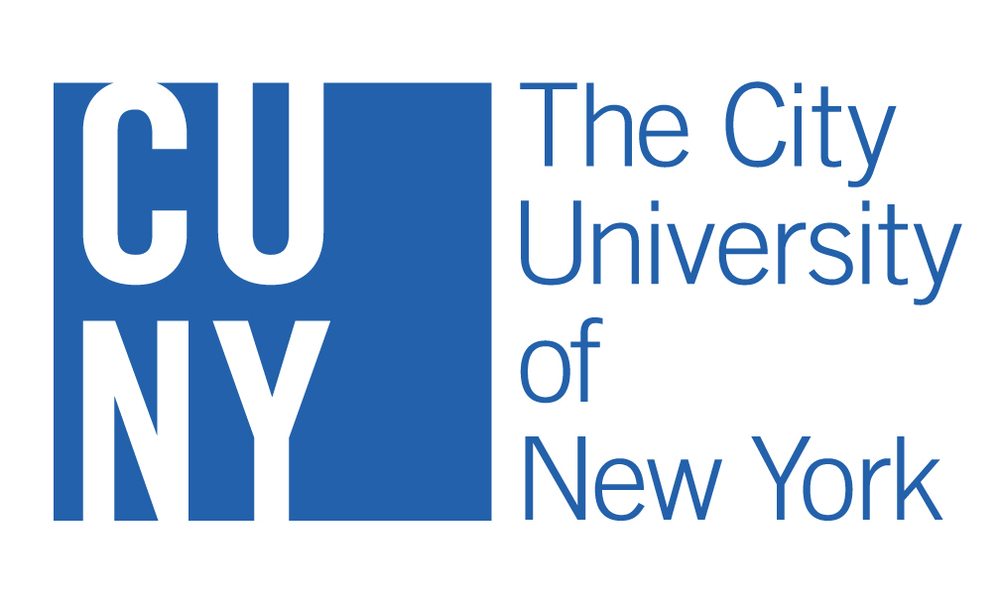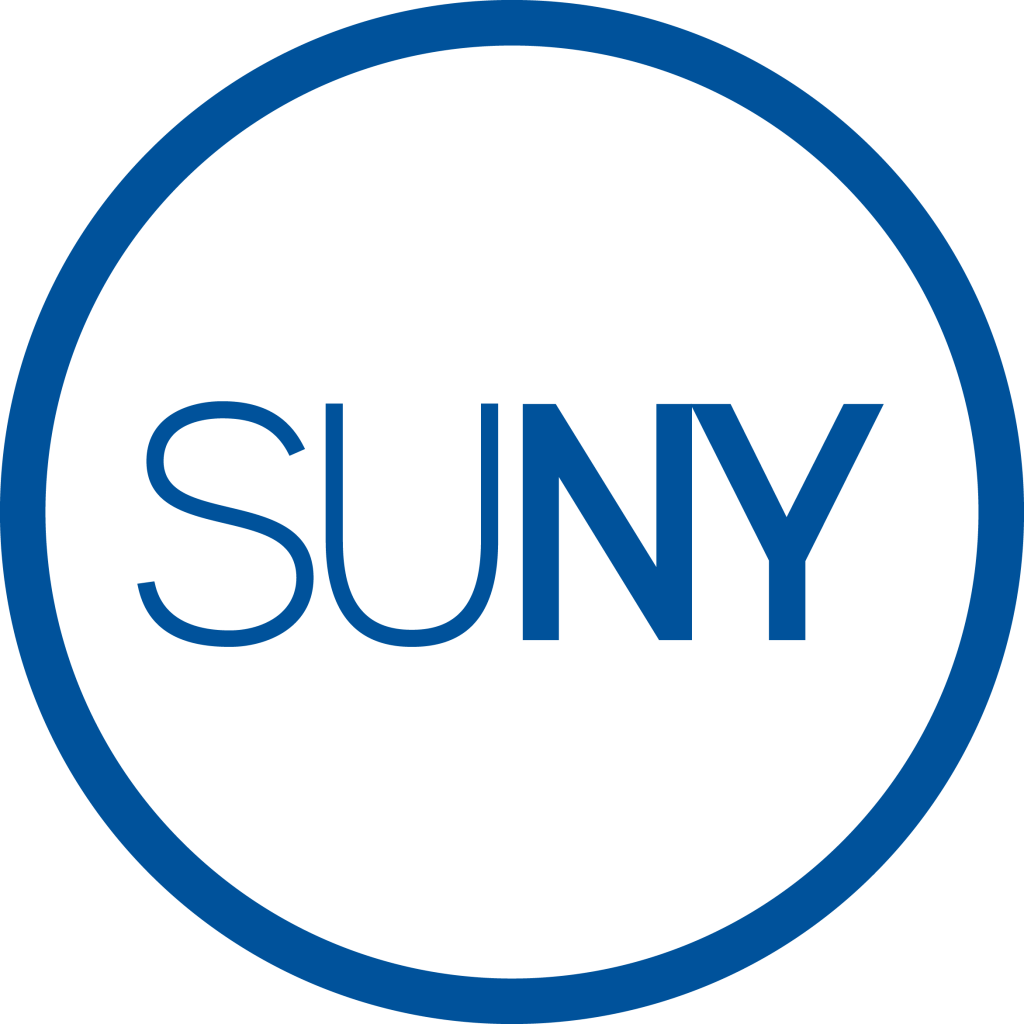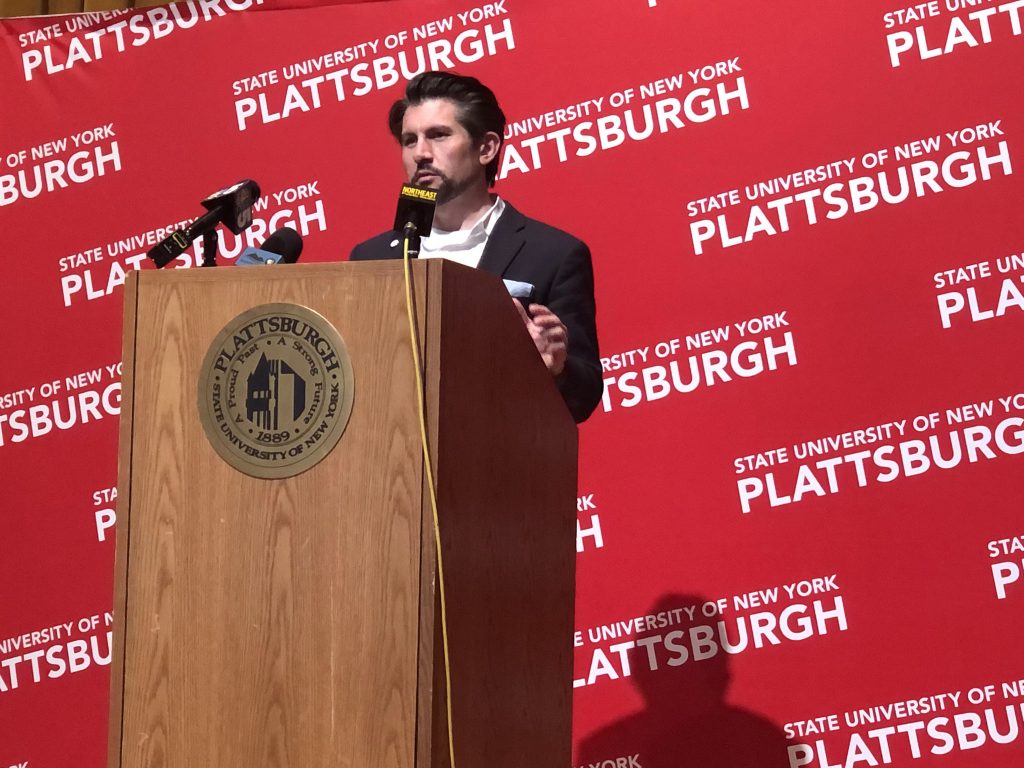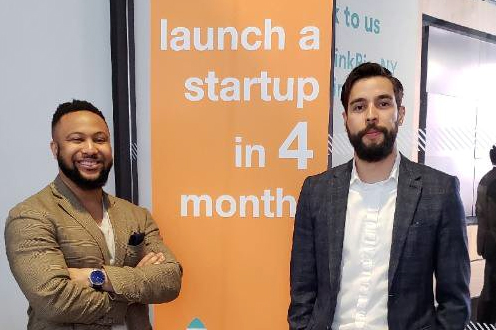From CUNY News Office:
For the City University of New York, the final year of the second decade of the third millennium truly was a time to turn the corner and push forward, full steam. Still, even with all eyes fixed on the future we couldn’t wave goodbye to 2019 without pausing to take stock of our collective achievements and consider all that we have learned and done over the previous 12 months.
The year opened with the unprecedented appointment of the University’s first Chancellor of color, in February, a development that positioned CUNY to begin writing a bright, bold new chapter in its illustrious story; it wound down with ratification of an historic labor agreement that signaled CUNY’s steadfast commitment to its faculty and staff.
In between, there were many successes and wins — significant and small, symbolic and literal — for students, teachers and the CUNY community as a whole. Here, we look back on the top 10 most memorable and consequential aspects of 2019, a year in which the University closed one book and resolutely opened another.
1. LEADING THE WAY
CUNY opened a historic new era in February, when the Board of Trustees selected Félix V. Matos Rodríguez, the president of Queens College, to lead the University. Matos Rodríguez is CUNY’s first Chancellor of color and first Latino leader. “The thing about being first is that you want to make it possible for people to come after you,” he said at his nomination hearing, quoting African American higher-ed pioneer Dr. Ruth Simmons. On May 1, his first day as Chancellor, the man known as Felo lived up to those words and further diversified CUNY’s leadership when he began naming his cabinet: José Luis Cruz, the former president of Lehman College, was tabbed as executive vice chancellor and university provost; Hector Batista, the former president and CEO of Brooklyn’s Chamber of Commerce, was selected as executive vice chancellor and chief operating officer; and Glenda Grace became senior vice chancellor for institutional affairs and strategic advancement. This month, the Chancellor named a CUNY alumnus, Allen Y. Lew, to serve as senior vice chancellor of facilities, planning and construction management; Lew is the first Asian-American vice chancellor in CUNY’s history.
2. THE WINNER IS … CUNY!
Students, teachers and alumni did themselves proud in 2019, reeling in a raft of honors in the sciences, humanities and arts. Gilda A. Barabino, dean of The City College of New York’s Grove School of Engineering, was elected to the National Academy of Engineering in February. The following month, poet Grace Schulman, a distinguished professor of English at Baruch, was elected to the American Academy of Arts and Letters. In April, two prominent members of the CUNY arts and humanities faculty, composer Suzanne Farrin and historian Helena Rosenblatt were awarded Guggenheim Fellowships. Myriam Sarachik, distinguished professor at The City College of New York, was the recipient of the 2020 American Physical Society Medal for Exceptional Achievement in Research, capping an illustrious career with one of the highest honors in her field; and in September, neuroscientist Vanessa Ruta (Hunter ’00) and poet-novelist Ocean Vuong (Brooklyn, ’12) won coveted fellowships from the John D. and Catherine T. MacArthur Foundation, bringing to 26 the number of CUNY “geniuses.” The accolades weren’t limited to teachers and grads. In December, first-year York College student Camryn Bruno was named the NYC Youth Poet Laureate for 2019. The Newmark Graduate School of Journalism snared a Harvard-MIT award to analyze the role of artificial intelligence in immigrant and low-income communities. Sana Batool, a 2018 graduate of CUNY’s Macaulay Honors College at Lehman who is now studying at Harvard Medical School, was a recipient of a prestigious Soros Fellowship, and she was not alone. Students also won Fulbrights, undergraduate awards from the National Science Foundation and a host of other nationally and regionally competitive prizes. Indeed, it would be difficult to include in a single list the myriad ways CUNY scholars and students helped enrich our knowledge as they expanded their own. From black corals and seven-foot sea anemones in the Gulf of Mexico, to bioflourescent sharks, Mayan Empire artifacts from pre-Columbian Belize and unfathomable fossils that tell us more than we’ve ever known about the evolution of mammals, 2019 was a year in which CUNY researchers made an indelible mark.
3. FEELING BOOKISH
For CUNY authors, 2019 was inarguably one for the books. Three faculty-penned novels made The New York Times 100 Notable Books of the Year list — The Need, by Brooklyn College’s Helen Phillips, The Topeka School (a top 10 pick) by Ben Lerner, also of Brooklyn College, and The Shadow King by Maaza Mengiste of Queens College. Phillips’ book was also longlisted for the prestigious National Book Award. The Graduate Center’s André Aciman generated some buzz of his own, when he published Find Me, the highly anticipated follow-up to his beloved 2007 novel Call Me By Your Name. And let’s not forget Hunter’s Téa Obreht, whose second novel, Inland, was lauded for reimagining American Western fiction. Reviewers also crowed over several CUNY-originated works of non-fiction. Leading the way were two great reads: The Enigma of Clarence Thomas, Brooklyn College political scientist Corey Robin’s groundbreaking exploration of how a young black nationalist became the most conservative justice on the Supreme Court; and Tehran Children: A Holocaust Refugee Odyssey, in which City College’s Mikhal Dekel recounts the perilous, grueling odyssey her father made as a teenager fleeing Nazi-occupied Poland, which led him through the USSR to Iran and, eventually, to Palestine. And that’s not all; CUNY faculty are always hard at work, researching and writing the next crop, many of them aided by CUNY’s Book Completion Award.
4. THANKS MUCH!
Donors large and small stepped up the generosity in 2019, and CUNY was the bigtime beneficiary. On the annual nationwide day of giving on the Tuesday after Thanksgiving, known on our campuses as CUNY Tuesday, the University reached the $1.5 million mark, surpassing our goal of $1 million and far outmatching the proceeds of previous years. Some 5,672 donors made this possible and exemplified the generosity of the CUNY community. Barnes & Noble Chairman Leonard Riggio penned a memorable subplot and made commencement more memorable at Kingsborough Community College in June, pledging to fully fund two-year scholarships for 100 students. That same month, the College of Staten Island received its largest-ever donation — a $7.5 million gift from Class of ’65 grads Lucille and Jay Chazanoff that will significantly bolster the School of Business. CUNY’s highly promising Accelerate, Complete and Engage (ACE) program will continue to expand its reach thanks to a $4 million gift from the Donald A. Pels Charitable Trust, announced in October. ACE expanded to Lehman College in fall 2019 with an inaugural cohort of 254 students that was sponsored by Robin Hood with a $1.1 million grant. A grant from the BNY Mellon Foundation will support students who completed the ASAP program and are on track to earn a baccalaureate in a STEM or finance-related field at one of CUNY’s senior colleges.
5. RANKINGS & REP
The City University of New York has long been touted for its success in elevating students from underrepresented groups; in 2019, that rep was reinforced by a wave of positive rankings results and other good news. Six CUNY colleges placed in the top 25 nationally on CollegeNET’s 2019 Social Mobility Index in November, and Baruch scored the top spot for a fifth straight year. Seven CUNY colleges were ranked in the top fifth of Money’s “Best Colleges for Your Money” list, and the University dominated both Forbes’ and the Wall Street Journal’s “Best-Value” college rankings. Three CUNY community colleges were selected by the Aspen Institute for their outstanding achievements in November, placing them among the top 15% of community colleges nationwide, and U.S. News & World Report singled out CUNY’s School of Professional Studies and Graduate School of Public Health and Health Policy for the superior quality of their programs. CUNY also led the country’s public universities and colleges in terms of diversity in its managerial ranks, according to The Chronicle of Higher Education. The accolades help to explain why CUNY’s freshman enrollment continued to counter national trends this fall when it rose 2.8 percent to 40,768 students, a University record that marked a 17 percent increase since 2010. Freshman enrollment has remained largely flat during the same period in public and private universities.
6. ‘WE HAVE YOUR BACK’
CUNY put its commitment to serving all students on full display this year, with new and expanded initiatives to aid immigrants and undocumented students. Currently, there are 714 CUNY students attending the University on full-tuition scholarships from TheDream.US. In August, CUNY hosted a program to welcome the newest recipients of the TheDream.US scholarship at CUNY and across the country. More than 140 CUNY DREAMers attended, and hundreds more from schools across the country watched online. CUNY also partnered with PEN America to expand DREAMing Out Loud, a program that provides workshops for DREAMers and other students on CUNY campuses to write about their experiences. The fruits of their work filled a thick anthology, published in June. In July, the Chancellor announced that thanks to Governor Cuomo undocumented students who were educated in New York high schools could begin applying for state financial aid and scholarships under the José Peralta New York State DREAM Act. CUNY colleges also strive to help immigrants and first-generation college students navigate the challenges of higher education and graduate in a timely fashion. Brooklyn College opened its Immigrant Student Success Center, joining John Jay College of Criminal Justice in providing the University’s first spaces that offer a comprehensive range of services. On Sept. 21, CUNY Citizenship Now! and the New York Daily News commemorated Citizenship Day 2019 by helping more than 600 permanent residents apply for citizenship at John Jay College of Criminal Justice. “CUNY’s message to immigrant New Yorkers is straightforward,” Chancellor Matos Rodríguez wrote in the Daily News. “We know and treasure your incredible talent and persistence. We have your back.”
7. THE ART OF IT ALL
CUNY’s campuses are cultural hubs, enriching the city’s quality of life with a bevy of programs and events. In 2019, this role was demonstrated time and again. In Brooklyn, Medgar Evers College made a summertime splash with its Dr. Mary Umolu Jazzy Jazz festival, which paid tribute to the legendary Eddy Grant over nine mellifluous Friday nights. In September, just in time for its 40th season, the Lehman Center for the Performing Arts in the Bronx, unveiled a glittering new glass façade that improved accessibility and added 5,400-square feet of space and new bathrooms for patrons. During Hispanic Heritage Month, Queens College, Hostos Community College and Lehman participated in the New York Latin American Art Triennial, which featured the work of over 100 Latino artists from the Caribbean, Central and South America. Then, in November, John Jay, CCNY and Hostos partnered with the School of Visual Arts to create “La Habana 500: A New York Salute to a Timeless City.” a series of talks, tours and a concert to commemorate the quincentennial celebration of Cuba’s capital city. John Jay College also played host to Lincoln Center’s White Light Festival, when Druid, an Irish theater company, brought its acclaimed —“visually transfixing” said The New York Times — production of Shakespeare’s “Richard III” to the Gerald W. Lynch Theater. Meanwhile, CUNY students continued to diversify dozens of arts and cultural organizations through participation in the CUNY Cultural Corps. The program, which exposes students to future careers in the arts, launched its fourth year in September with a boost from the Rockefeller Foundation and the city’s Department of Cultural Affairs.
8. CUNY ON THE REEL
The City College of New York marked its little-known history as documentary film pioneers in 2019 with a special “Year of Film” celebration. As part of the festivities, CCNY screened “Cinema and Sanctuary,” an hour-long film by current CCNY Professor David Davidson about the college’s eight-decade history as a center of film education, at Lincoln Center. Earlier in the year, just before “The Green Book” won three Oscars including Best Picture, professor Yoruba Richen, director of the documentary program at the Craig Newmark Graduate School of Journalism, released “The Green Book: Guide to Freedom,” a documentary that explores the complete story and actual history behind the travel guide that inspired Oscar-winning Hollywood film. Another powerful documentary, “After Maria,” directed by Nadia Hallgren, a Hunter College alumna who made the film with the help of staff at Hostos Community College, chronicled the struggles of three families who were relocated to New York after their homes were devastated by Hurricane Maria in 2017. Another documentary with ties to CUNY, “Hungry to Learn,” debuted in October at the New York Doc Film Festival, telling the story of four students — including a senior at Lehman College — who struggled with food insecurity. And there’s more: A new film version of “West Side Story,” scheduled for release next year, has a strong CUNY connection. Virginia Sánchez Korrol, a Brooklyn professor emerita, served as the film’s historical consultant. CUNY Chancellor Félix V. Matos Rodríguez visited the set in October, where he met director Steven Spielberg and legendary actress Rita Moreno.
9. COUNTS FOR A LOT
The City University of New York added to its record of public service this year, continuing relief work in Puerto Rico and championing new initiatives to boost civic engagement. As part of Governor Cuomo’s NY Stands with Puerto Rico Recovery and Rebuilding Initiative, the University deployed more than 220 students to work with residents on the island’s ongoing recovery. CUNY Service Corps students logged more than 22,000 hours of work, and said the lessons they learned would help them for many years to come. In New York, CUNY marked National Voter Registration Day with mobilized efforts to increase the number of registered voters on campus. CUNY accounts for approximately 40% of the voters who register on that day. CUNY will also figure prominently in next year’s Census effort. The City Council and NYC Census 2020 have turned to CUNY to administer and oversee $19 million in contracts that have been awarded to more than 150 community-based organizations at the frontlines of the 2020 Census deployment. To help ensure an accurate count, the University will also be mobilizing 200 students as part of CUNY Census Corps. Students will begin training in January to carry out these extremely important tasks, which help to determine how much federal funding the state and city will receive.
10. THE YEAR IN GOOD FAITH
The University’s administration and employees had reason to cheer on the day before Thanksgiving, when tallies showed that members of the Professional Staff Congress overwhelmingly voted to ratify a new five-year contract for CUNY’s biggest labor union. The pact — described by Chancellor Matos Rodríguez as a “vital investment in the future” for all of CUNY — provides generous increases for all of the union’s nearly 30,000 members, with increases in adjunct pay that rise to as much as 71 percent by the final year. PSC President Barbara Bowen called the deal, which advances CUNY’s efforts to further integrate the adjunct faculty into the life of each campus, a “principled and imaginative contract that constitutes a victory for every member of the union.” After the ratification in September of a contract by employees of the International Brotherhood of Teamsters, Local 237, the PSC deal brought to completion of all of CUNY’s collective bargaining agreements for the first time in years.
The City University of New York is the nation’s largest urban public university, a transformative engine of social mobility that is a critical component of the lifeblood of New York City. Founded in 1847 as the nation’s first free public institution of higher education, CUNY today has seven community colleges, 11 senior colleges and seven graduate or professional institutions spread across New York City’s five boroughs, serving 275,000 students and awarding 55,000 degrees each year.







Facebook Comments